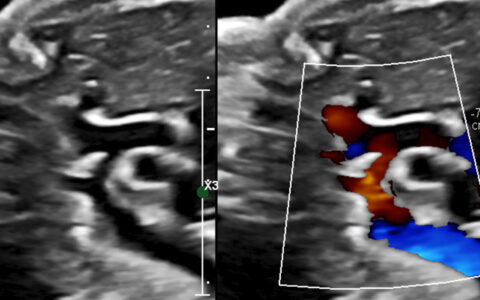The number of candidates awaiting heart transplant in the U.S. steadily increased from 2007 to 2015 and continues to far exceed the pool of organ donors. Until recently, hearts from donors infected with hepatitis C virus (HCV) were routinely discarded due to poorly tolerated HCV treatments associated with increased rates of graft rejection. However, newer HCV treatments, specifically direct-acting antiviral (DAA) therapies, are well tolerated and have excellent treatment success rates in immunosuppressed populations.
“Our ability to transplant organs from HCV-exposed donors has allowed us to greatly expand the donor pool for patients awaiting transplant.”
“In the era of highly effective DAAs, our ability to transplant organs from HCV-exposed donors has allowed us to greatly expand the donor pool for patients awaiting transplant. This can mean reducing their waitlist duration and likelihood of dying on the waitlist, or from being removed from the waitlist for becoming too ill,” said Kelly Schlendorf, M.D., medical director of the Heart Transplant Program at Vanderbilt University Medical Center.
In 2016, the program began utilizing hearts from HCV-exposed donors for selected waitlisted patients. Since then, 209 patients ages 18 and older have undergone heart transplant at Vanderbilt, including 65 from HCV-exposed donors.
Patients consent to accept a heart from HCV-exposed donors before they are listed for transplant and are treated per Vanderbilt’s standard immunosuppression protocol. Those who go on to develop HCV infection are referred to hepatology and initiate treatment within months. “This venture has been a team effort, one that we could not have embarked upon without our colleagues in hepatology,” Schlendorf said.
Research Shows DAAs Well Tolerated in Heart Transplant Recipients
In early 2018, the Vanderbilt Heart Transplant team published its preliminary findings in the Journal of Heart and Lung Transplantation, describing 13 patients transplanted with HCV-exposed donors between September 2016 and March 2017.
At the time of transplant, the mean age of recipients was within 10 years of age 53. Eight patients were on left ventricular assist device (LVAD) support. After consent to consider an HCV-positive donation, mean time to heart transplant was 11 ± 12 days. Schlendorf says the short wait time was true “even for patients with unfavorable blood groups, elevated panel reactive antibodies or lower listing status.”
Nine of the 13 patients (69 percent) developed HCV after transplant, including eight who completed DAA treatment and demonstrated cure, as defined by a sustained virologic response 12 weeks after treatment. One patient died during week seven of treatment from pulmonary embolism. The other four patients did not develop HCV infection. In all treated patients, DAAs were well tolerated.
Vanderbilt’s experience represents the first and largest series to date demonstrating that HCV treatment leads to rapid viral suppression early after transplant, despite immunosuppression.
“It’s possible to change the waiting list time… from one year to just weeks, obviating the need for LVAD support.”
“By adding the option of an HCV-positive donor, it’s possible to change the waiting list time for that patient from one year to just weeks, obviating the need for LVAD support,” said JoAnn Lindenfeld, M.D., director of the Advanced Heart Failure and Transplantation section at Vanderbilt. “Previously, many waitlisted, higher-risk patients needed to have an LVAD implanted prior to finding a donor heart, adding recovery time from that procedure before undergoing transplant.”
Next in HCV Heart Transplantation
Lindenfeld indicates the next phase of discovery will be assessment of long-term outcomes. “We already know that one-year survival is quite good, but we want to inform patients about the outcomes at two years, three years, four years, and five years, and we want to compare those outcomes to what might have transpired had the patient not been transplanted so quickly.”
“This is an ongoing effort,” said Schlendorf. “As we continue to use these hearts, we are constantly assessing the short- and long-term outcomes to ensure that using these donors is safe and effective.”





